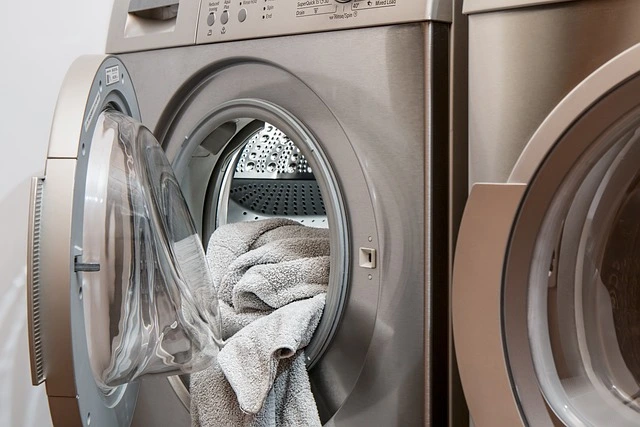When it comes to moving appliances, particularly heavy and bulky ones like washing machines. homeowners often find themselves grappling with tough decisions. One of the most common questions that arise during such situations is whether it’s safe to lay a washer on its side.
In this article, we will delve into the complexities of this issue. dispelling myths and shedding light on the potential risks and benefits. We’ll also address a crucial aspect: how long can you keep your washer on its side without causing harm?
The Myth vs. Reality: Laying the Washer on Its Side
It’s common to come across conflicting advice regarding laying a washing machine on its side. Some sources claim it’s perfectly fine, while others warn against it vehemently. The truth lies somewhere in between.
The Pros and Cons of Laying the Washer on Its Side
Laying a washing machine on its side can have positive and negative implications. Let’s explore the pros and cons.
The Pros
- Transport Convenience: When moving, especially in tight spaces or up and down stairs, tilting the washer on its side can make transportation significantly easier.
- Space Optimization: If you’re storing the washer temporarily, placing it on its side might help save space in a crowded area.
- Access to Certain Parts: Tilting the washer can provide better access to components such as the bottom panel for cleaning and maintenance.
The cons
- Damage to Internal Parts: Washing machines are intricate appliances with delicate internal components. Laying them on their side could potentially cause stress on these parts, leading to malfunctions.
- Fluid Leakage: There’s a risk of water and detergent leaking from the machine if tilted. This could result in damage to your floors or other belongings.
- Misalignment Issues: If not handled carefully, the washer’s alignment might get disrupted, causing vibrations and noise during operation.
- Tub Damage: The washing machine’s drum or tub could get damaged if the machine is mishandled while being laid on its side. cause The drum is a crucial component that needs proper care to prevent imbalances and leaks.
- Seal and Gasket Problems: Tilting the washer can pressure the door seal and gasket, potentially causing them to lose effectiveness. This could lead to leaks or inadequate sealing during future wash cycles.
- Electrical and Mechanical Components: Delicate electrical and mechanical parts might be stressed or damaged during tilting, leading to performance issues.
How Long Can You Keep Your Washer on Its Side?

If you decide to lay your washing machine on its side, keeping the duration as short as possible is essential. Ideally, you should strive to return the washer to its upright position within 24 hours to minimize the risks associated with prolonged tilting. This timeframe helps reduce the chances of damage to internal components, seals, and gaskets.
Preparing Your Washer for Laying on Its Side:
Dos and Don’ts
Before you even consider tilting your washing machine, it’s crucial to prepare it adequately to minimize potential damage. Here are some important dos and don’ts to keep in mind:
Dos
Ø Secure All Moving Parts: Make sure the washer’s drum and other moving parts are securely locked in place before you start tilting it. Many modern washing machines come with transportation bolts or brackets specifically designed to hold these components during transport.
Ø Disconnect and Drain: Before tilting, disconnect the washer from the power source and the water supply. Additionally, ensure the washer is completely drained of water to prevent leakage during tilting.
Ø Protect the Exterior: Cover the exterior of the washer with a soft cloth or protective material to prevent scratches and dents while maneuvering it.
Don’ts
• Avoid Rough Handling:
Never tilt the washer abruptly or with excessive force. Gently lay it on its side to prevent jarring impacts that could damage internal components.
• Don’t Overlook Safety:
Always prioritize safety during the process. If the washer is too heavy or if you’re unsure about the procedure, consider seeking assistance from professionals or friends.
Mitigating Risks: Best Practices While the risks associated with laying a washer on its side cannot be completely eliminated, you can adopt certain best practices to minimize the potential negative impact:
• Use Support:
Place the washer on a stable and level surface, preferably with some support underneath, to prevent unnecessary stress on its structure.
• Short Duration:
As mentioned earlier, keep the washer on its side for the shortest duration possible, ideally within 24 hours.
• Inspect After Upright Position:
Once you’ve returned the washer to its upright position, take some time to inspect it carefully for any visible damage or signs of leakage before using it again.
Final Thoughts
Laying your washing machine on its side is a decision that requires careful consideration. While it might offer convenience and save space, the potential risks to the appliance’s internal components, seals, and overall functionality should not be underestimated.
By following best practices, taking necessary precautions, and being mindful of the duration, you can navigate the process with a greater degree of confidence.
Whether you’re moving or simply seeking temporary storage.
making an informed decision will contribute to the longevity and optimal performance of your washer for years to come.
